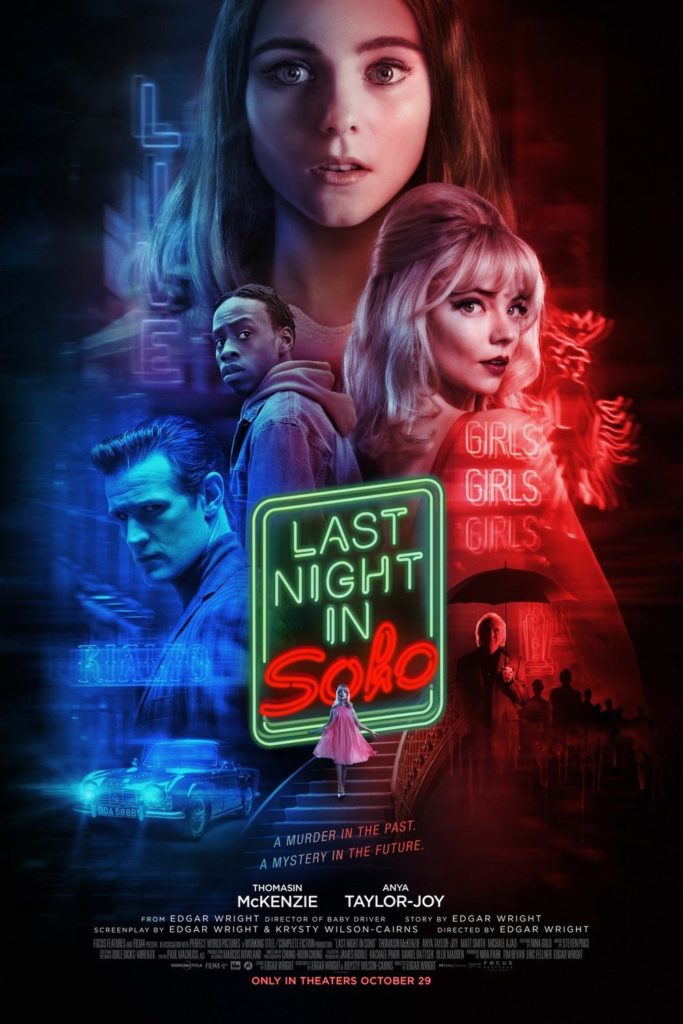I just saw “Last Night in Soho,” Edgar Wright’s new movie about a young London girl who forms a psychic bond with her counterpart from 50 years ago and quickly gets in over her head. THIS WILL NOT BECOME A MOVIE-REVIEW BLOG, but lo and behold, I formulated some disjointed thoughts about this one too.
No big spoilers.
As a director, Edgar Wright has an idiosyncratic visual vocabulary that’s immediately recognizable, like Wes Anderson without all the twee. One of his favorite toys is the smash cut, which is a natural fit for horror movies; really it’s a surprise he’s never directed one before. (Oh, you want a jump-scare? Hell, Edgar’s been filming jump-pouring-pints-of-beer for almost 20 years.) And like Jordan Peele, he’s not so far removed from his comedy roots that he won’t sprinkle some jokes throughout the script.
This movie shows Wright’s advancing maturity, not least in that it centers on female characters with agency (new territory for him!) and thus easily passes the Bechdel Test (perhaps his first film to *ever* do that?). His so-called Cornetto Trilogy films are ageing much better than the other bro comedies of the mid-aughts, but are still fundamentally about guys being dudes. In contrast “Last Night in Soho” attempts to be really about something—the fearful lives of women navigating the patriarchy; the crippling effects of mental illness—though it all feels a bit unfocused, especially at the end (see below).
While all movie reviews are subjective, I will state one objective fact: this film is gorgeous. The director of photography is Chung-hoon Chung, whom I was surprised to learn was also DP for “Oldboy” way back in 2003.1 The screen is soaking in dreamy reds and blues that reminded me (both visually and thematically) of “Eyes Wide Shut,” and you could have a decent moviegoing experience watching the thing on mute. I mean just look at that poster! It’s a visual love story to the swinging 60s that doesn’t ignore what was awful about them. Heck, what was awful about them is the PLOT OF THE MOVIE.
Horror movies aren’t historically the place to extend your acting chops, but many recent actors haven’t gotten that memo—see Florence Pugh in “Midsommar” and Lupita Nyong’o in “Us.”2 Thomasin McKenzie and Anya Taylor-Joy didn’t punch the camera in the face quite that hard, but they do a great job portraying two sides of the same demented time-traveling coin.
It gets messy in the third act, as Edgar Wright movies often do.3 At one point the protagonist seems so deep in the horror-movie shit that you assume the film is at its climax, but… it keeps going. The actual climax, with its big reveal, follows the rhythm of the equivalent scene “Hot Fuzz” so closely that it’s hard not to think of it as comedic. And just like in “Baby Driver,” the final scene is so cheerfully tidy (including, literally, a giant bow!) that I wondered if we were meant to think it was a fantasy.
But it’s a good dang movie, stylish and scary and well worth overlooking a few lumps and bumps.
